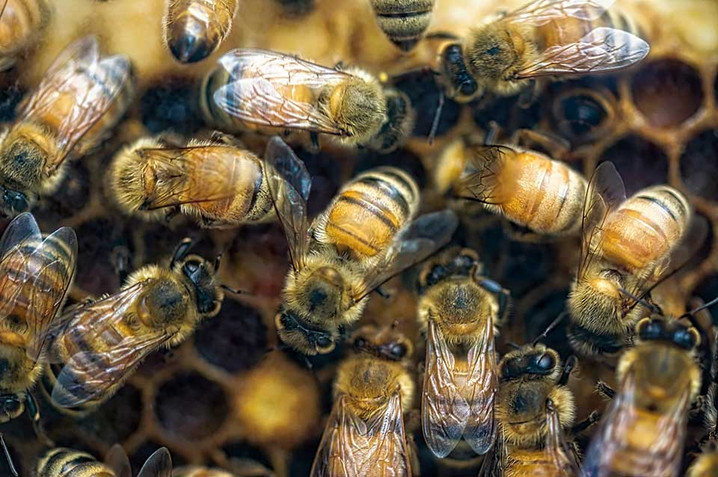Posted by Guest Blogger on 8th Feb 2018
Bees in the Orchard
For a number of years now, I’ve been fascinated with bees. As an orchard manager, I have an obvious interest in honeybees as important pollinators for our fruit trees. I’m even more fascinated by the many other wild pollinators in the natural environment. Unknown to many folks, honeybees are not native to Pennsylvania, and join forces with over 300 species of bees (that do not produce honey) to pollinate food crops and other plants. Unfortunately, these bee populations are in decline nationwide due primarily to agricultural practices.
Since 2015, I’ve been taking small steps to make Kauffman’s Fruit Farm a more hospitable place for these beneficial insects to thrive. Here are a few things I’m currently working on…
- Partnered with the Xerces Society to write a Pollinator Habitat Conservation Activity Plan for guidance to implement specific practices.
- Partnering with the Natural Resource Conservation Service to develop a comprehensive conservation plan for our farm and utilize grants to implement conservation practices.
- Have a multi-year plan to make adjustments to our pesticide application practices to mitigate harm to wild pollinators.
- Have a multi-year plan to install a variety of plantings throughout the farm to provide protected habitat and diverse food sources for wild pollinators. Features include hedgerows, wildflower plantings, flowering cover crops, and windbreaks.
- Have a long term plan to eliminate the need to rent honeybee hives for crop pollination.
As a farmer, it’s hard not to utilize every square foot of tillable land and plant crops right up the farm border, allowing for no hedgerows between farms. However, this practice has minimized the ideal space for wild bees to inhabit and has minimized their year 'round food sources. Diversity is a key to a functional ecology, so if we were to reinstall hedgerows, it has solid potential to restore more ecological function and regain the “free” ecosystem service of the wild pollinators and other beneficial
So, last spring, I began planting certain tree and bush species on two of our farm borders. So far we planted things like elderberry, aronia, ninebark, redbud, sumac, tulip poplar, persimmon, pussy willow, honey locust, Jerusalem artichoke, and more. The goal is to plant things that provide optimal habitat and food sources for pollinators throughout the season while taking care to remove or obstruct species that could have a negative impact on the orchard. The march around the farm has begun, and I expect to double the border plantings this coming spring. It will be a slow process, generally following our orchard replanting because of the extra space it takes at the edge of the orchard. If plans hold, we will plant literally thousands of trees and bushes along our orchard margins. To minimize the cost of these plantings, I also started a nursery to propagate plants from seed or cuttings. Elderberry, persimmon, pawpaw, hickory, oak, and osage orange are some of what I’ve propagated so far. Jim, one of our orchard hands, takes great interest in plant propagation and is excited to help me expand the nursery for more quantity and diversity.
The loss of space at the edge of the farm might seem like a waste, but a hedgerow can have multiple functions, including productive yield that could have direct financial return. My hope is that as these hedgerows mature we will be able to harvest fruit, nuts, craft/floral items, and lumber from them. Fresh pawpaw and frittered elder flowers anyone?...aronia jelly, chestnuts, sumac lemonade???

